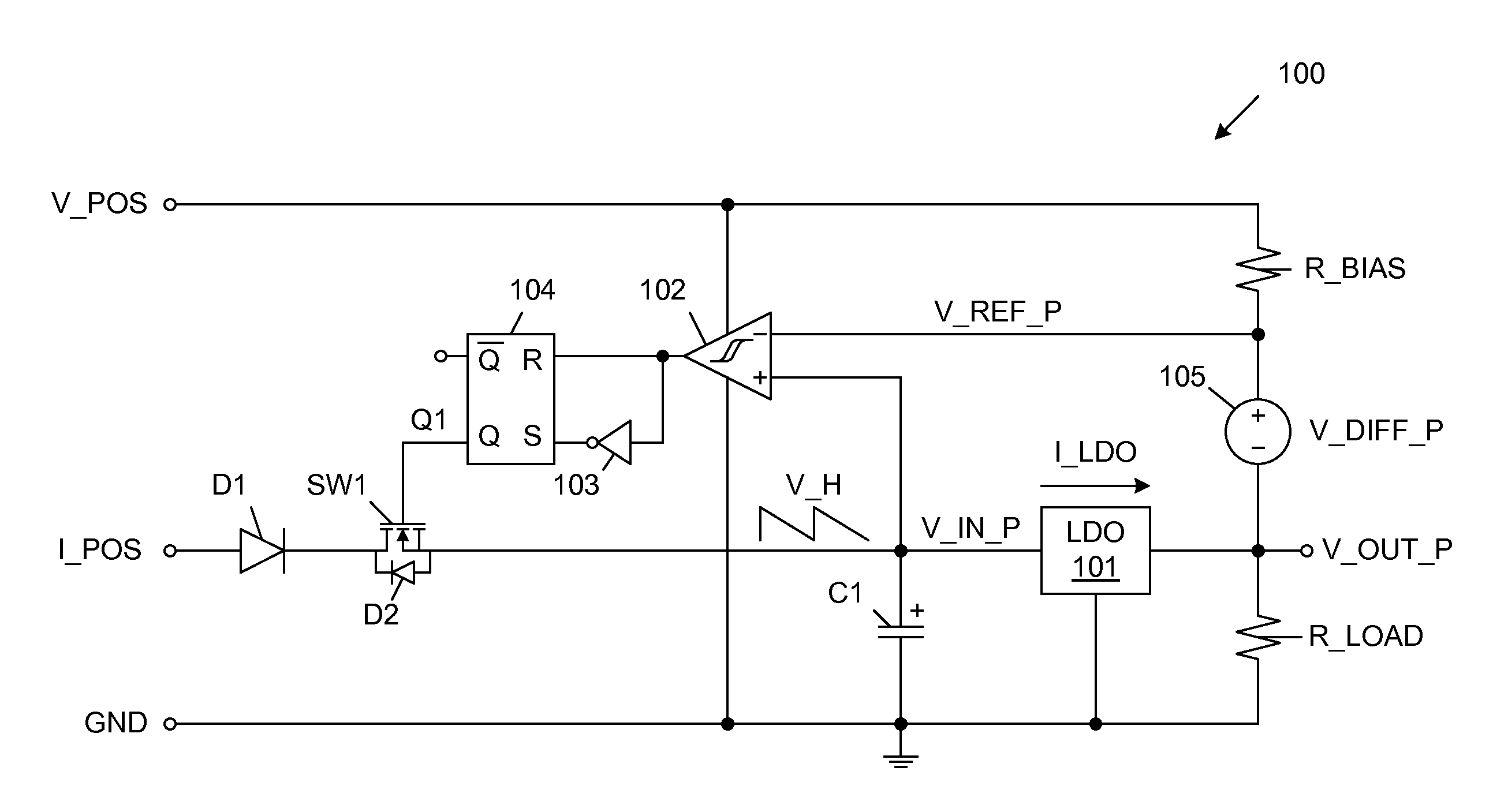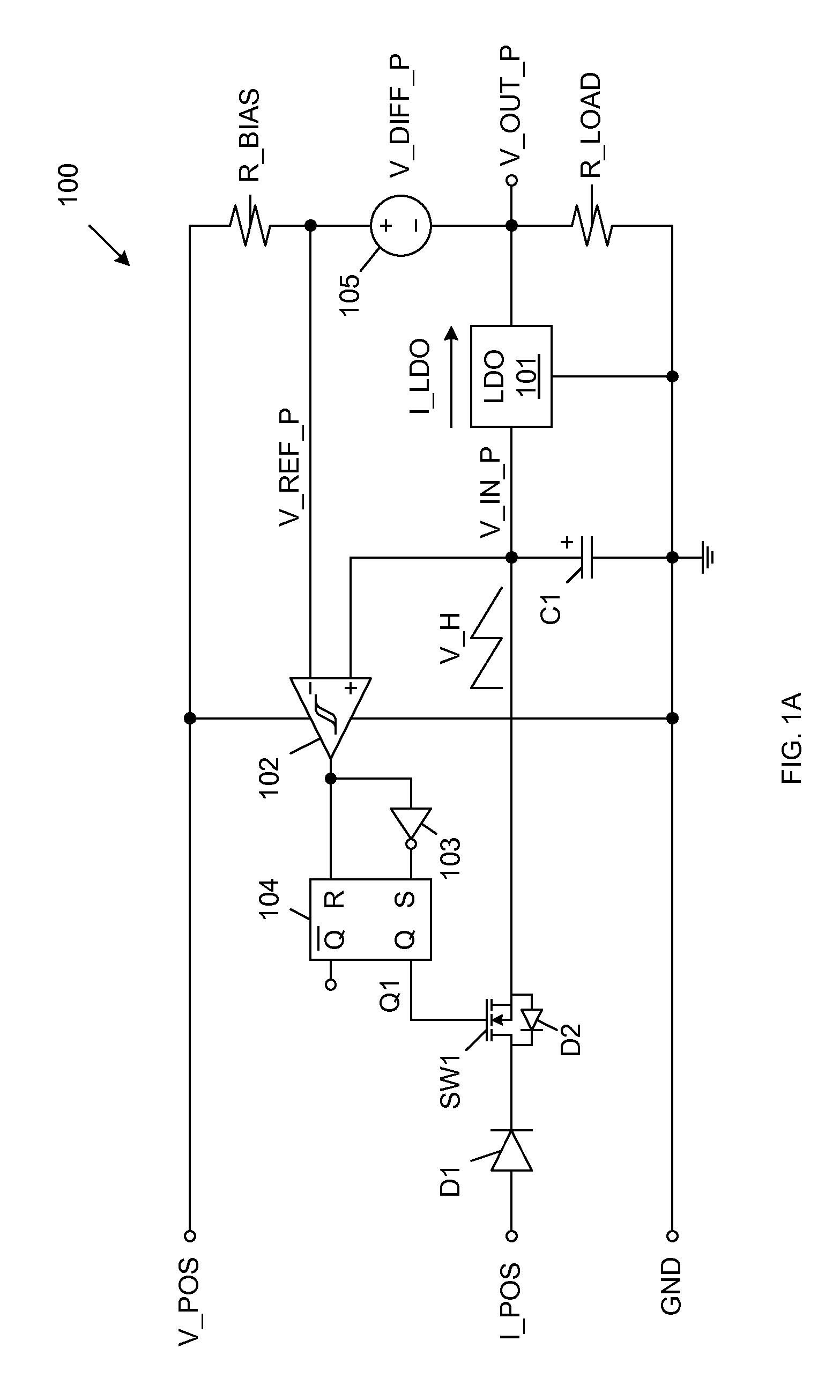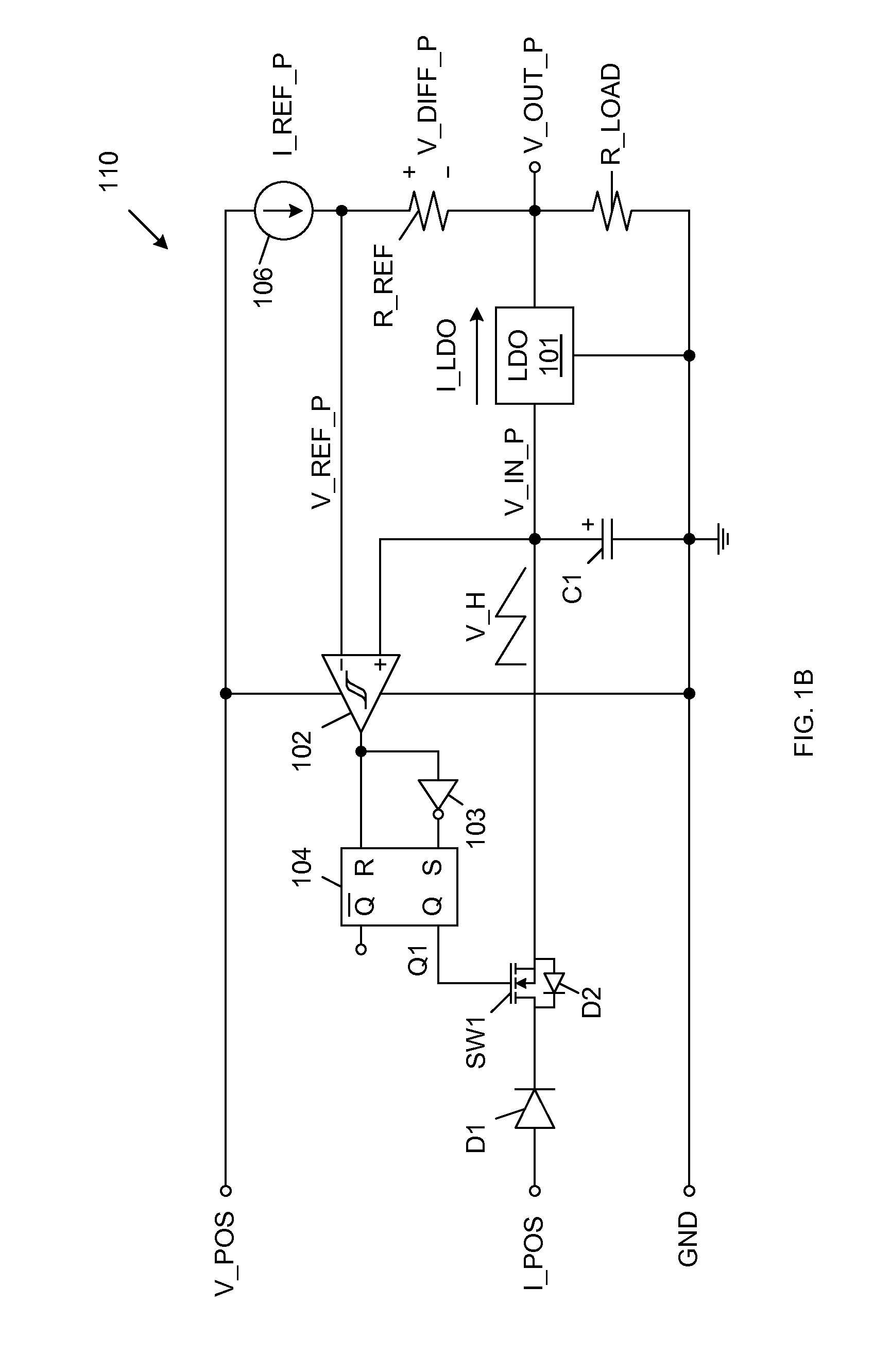Autonomous controlled headroom low dropout regulator for single inductor multiple output power supply
a technology of single inductor and multiple output power supply, which is applied in the direction of power conversion systems, instruments, dc-dc conversion, etc., can solve the problems of power supply also generating substantial noise and ripple in the output voltage, and most electronic circuits cannot operate correctly over this wide voltage rang
- Summary
- Abstract
- Description
- Claims
- Application Information
AI Technical Summary
Benefits of technology
Problems solved by technology
Method used
Image
Examples
Embodiment Construction
[0030]In general, the present invention provides a controlled headroom low dropout regulator (CHLDO) that includes circuitry to maximize the efficiency of a linear regulator, such as a low dropout regulator (LDO), by maintaining a very small voltage difference between the input and output terminals of the linear regulator. The CHLDO of the present invention can passively draw power from a continuous mode or discontinuous mode current source, without the need for any interactive control methodology. In alternate embodiments of the present invention, the CHLDO may either be un-clocked or clocked. The un-clocked CHLDO, which does not operate directly in response to a clock signal, does not require that any data be passed to or from the associated current source. The clocked CHLDO is enabled by and operates in synchronism with the same clock signal used to control an associated PWM current source. Thus, the clocked CHLDO of the present invention includes an additional input terminal to ...
PUM
 Login to View More
Login to View More Abstract
Description
Claims
Application Information
 Login to View More
Login to View More - R&D
- Intellectual Property
- Life Sciences
- Materials
- Tech Scout
- Unparalleled Data Quality
- Higher Quality Content
- 60% Fewer Hallucinations
Browse by: Latest US Patents, China's latest patents, Technical Efficacy Thesaurus, Application Domain, Technology Topic, Popular Technical Reports.
© 2025 PatSnap. All rights reserved.Legal|Privacy policy|Modern Slavery Act Transparency Statement|Sitemap|About US| Contact US: help@patsnap.com



